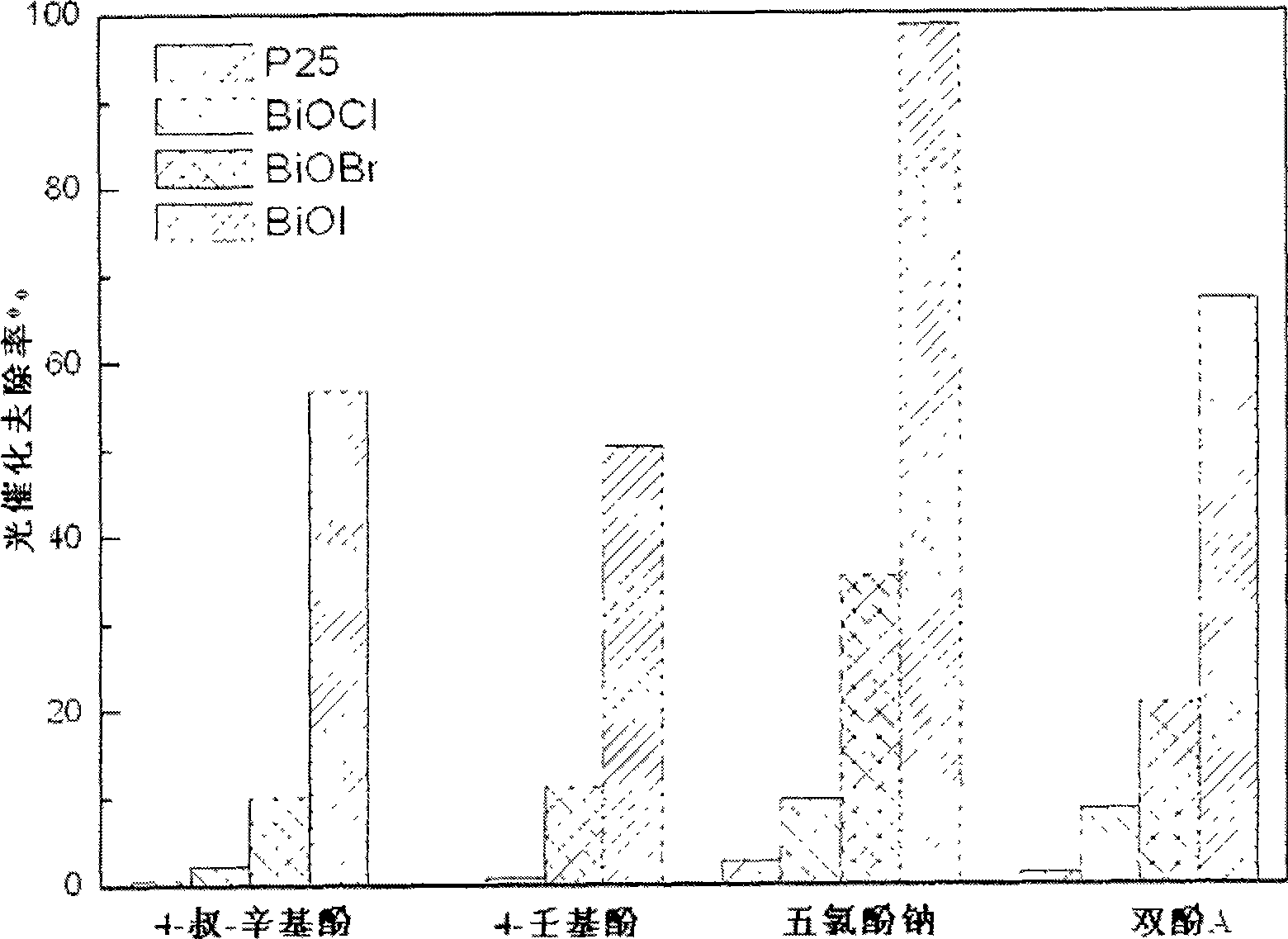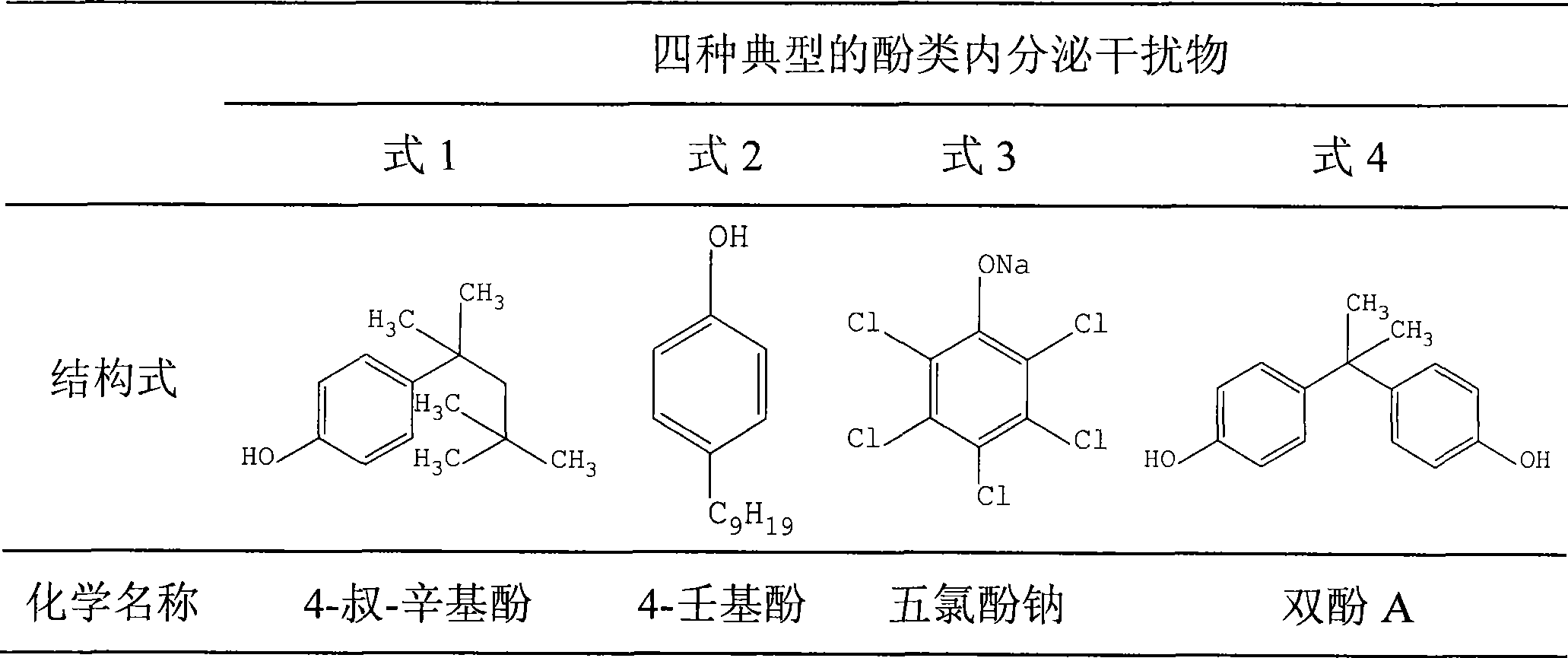Preparation method of photocatalyst for removing phenols incretion interferent in water
A technology of endocrine disruptors and photocatalysts, applied in the direction of physical/chemical process catalysts, chemical instruments and methods, water pollutants, etc., can solve the problems of complex synthesis methods, high cost, poor stability, etc., achieve wide sources and reduce preparation The effect of simple cost and materials
- Summary
- Abstract
- Description
- Claims
- Application Information
AI Technical Summary
Problems solved by technology
Method used
Image
Examples
Embodiment 1
[0021] 1) At room temperature, immerse 1g of sodium bismuthate in a mixed solution of 20ml of water and 20ml of ethanol;
[0022] 2) In the case of continuous stirring, add 8ml of hydrochloric acid (37wt%), hydrobromic acid (40wt%) or hydroiodic acid (45wt%) dropwise, and continue stirring for 0.5h before filtering;
[0023] 3) Place the filtered product in the air and dry it at 50° C. for 4 hours to obtain a BiOX (wherein X is Cl, Br or I) photocatalyst.
[0024] from figure 1 (a), figure 1 (b) and figure 1 It can be seen from (c) that the BiOX (X=Cl, Br or I) type catalyst has a sheet-like microscopic morphology, the thickness is concentrated at 87±20, 35±6 and 68±15nm, and the grain size is concentrated at 690±110, 600±100 and 150±60nm.
[0025] In addition, X-ray polycrystalline diffraction analysis shows that BiOX (X is Cl, Br or I) catalyst crystals belong to the tetragonal crystal system, and the space group is p4 / nmm (129); the diffuse reflection spectrum analysis ...
PUM
 Login to View More
Login to View More Abstract
Description
Claims
Application Information
 Login to View More
Login to View More - R&D
- Intellectual Property
- Life Sciences
- Materials
- Tech Scout
- Unparalleled Data Quality
- Higher Quality Content
- 60% Fewer Hallucinations
Browse by: Latest US Patents, China's latest patents, Technical Efficacy Thesaurus, Application Domain, Technology Topic, Popular Technical Reports.
© 2025 PatSnap. All rights reserved.Legal|Privacy policy|Modern Slavery Act Transparency Statement|Sitemap|About US| Contact US: help@patsnap.com



